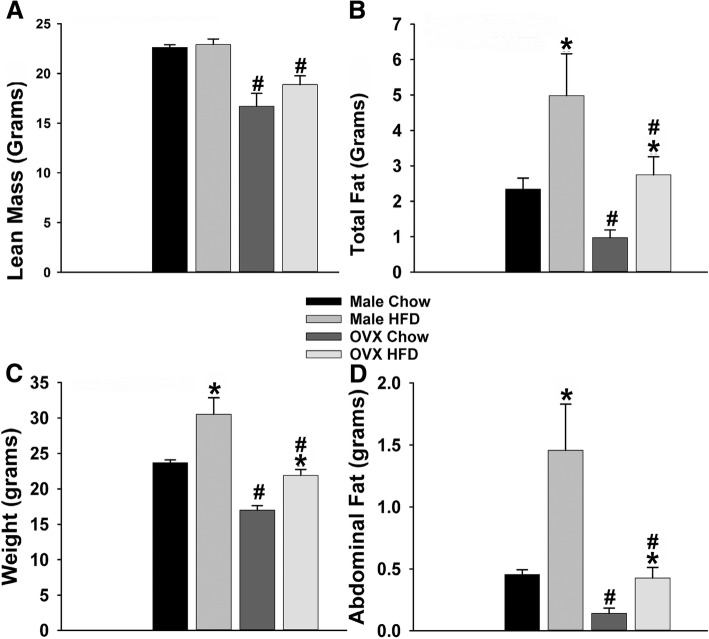Fig. 1.
HFD-fed males and females exhibit greater body weight and adiposity than their chow-fed counterparts. Average lean mass (a) in intact male chow-fed (n = 14) and high-fat fed (n = 13) as well as OVX chow-fed (n = 13) and HFD-fed females (n = 14) animals along with total fat (b), average body weight (c), and average abdominal fat (d) in grams. Lean mass and total fat were determined via MRI. Body weight was recorded on the day of the terminal harvest, and fat dissections were performed during harvest by making an incision through the umbilical region of the abdomen. Fat was collected from the dorsolumbar, inguinal, gluteal, epididymal, and perirenal regions of the abdomen and pelvic area. Bars represent means, and vertical lines 1 SEM of the lean mass (a), total fat (b), body weight (c), and fat mass (d). *p < 0.05 relative to standard chow; multi-factorial ANOVA/LSD; #p < 0.05 relative to males; multi-factorial ANOVA/LSD

